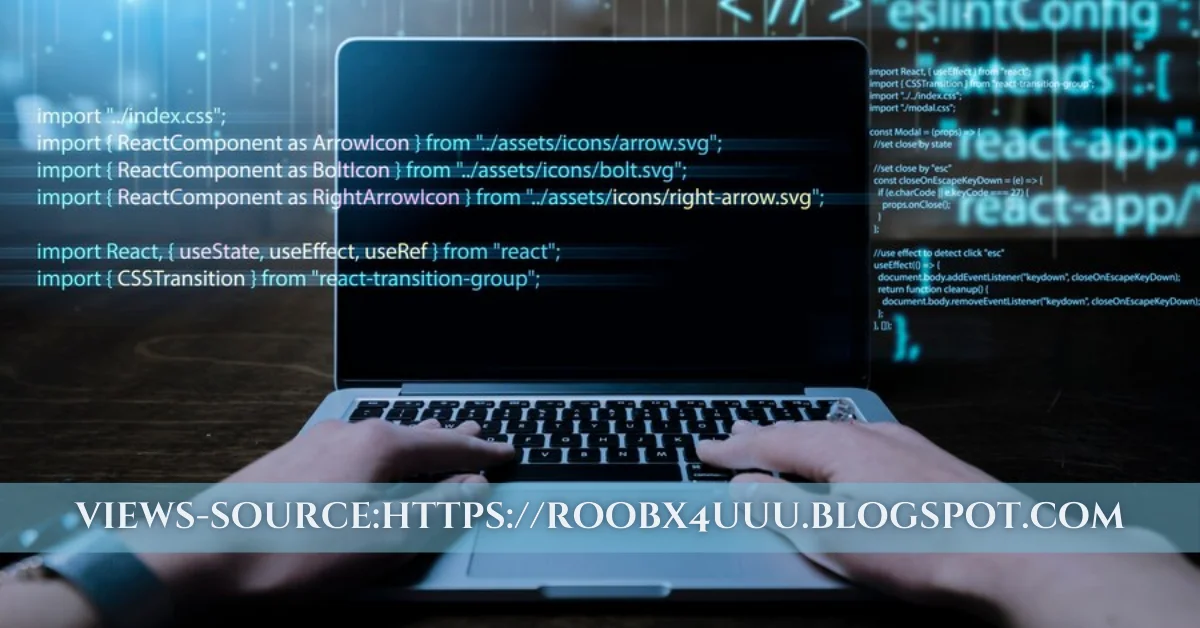Introduction to views-source:https://roobx4uuu.blogspot.com
Have you ever wondered what makes a website tick? The magic behind the scenes often goes unnoticed, yet it holds the key to understanding how web pages are crafted. By diving into the world of source code, specifically views-source:https://roobx4uuu.blogspot.com, you can unlock a treasure trove of knowledge about HTML and CSS. Whether you’re an aspiring developer or just curious about how your favorite sites are built, viewing source code is an essential skill that opens doors to endless possibilities. Let’s embark on this journey to decode web code together!
ALSO READ: EmbedTree.com: The Easy Way to Enhance Your Website
The Purpose of Viewing Source Code
Understanding the purpose of viewing source code is essential for anyone curious about web development. When you look at a website’s source code, you’re stepping into the mind of its creator.
It reveals how elements are structured and styled. You can see which HTML tags were used to build specific sections and how CSS enhances the visual appeal. It’s like uncovering a hidden layer beneath what you see on the surface.
Additionally, examining source code helps in troubleshooting issues. If something looks off on a site, inspecting the code often provides clues on what might be wrong.
For developers and designers alike, this practice promotes learning. By analyzing effective designs or complex functionalities, one gains insights that can inspire their own projects or improve existing skills. It fosters creativity and problem-solving abilities in ways few other activities can match.
Step-by-Step Guide on How to View Source Code
Viewing source code is simple and straightforward. Start by opening your web browser.
Navigate to the website you want to inspect, in this case, views-source:https://roobx4uuu.blogspot.com. Once the page loads fully, right-click anywhere on the screen.
A menu will pop up. Look for “View Page Source” or “Inspect.” Selecting either option will take you directly to the raw HTML of the webpage.
For a more interactive experience, choose “Inspect” which opens developer tools at the bottom or side of your window. Here, you can see various elements laid out cleanly.
Use keyboard shortcuts too! On Windows, press Ctrl + U; on MacOS it’s Command + Option + U. This instantly reveals all those behind-the-scenes codes that make up any site’s layout and functionality.
Dive into it! The more you explore, the better you’ll understand how websites are structured and designed.
Understanding HTML and CSS in Source Code
HTML and CSS are the backbone of web design. HTML, or HyperText Markup Language, structures your webpage. It defines elements like headings, paragraphs, images, and links.
CSS, or Cascading Style Sheets, takes care of presentation. It styles these HTML elements by controlling colors, fonts, layouts, and spacing. Together they create a visually appealing experience for users.
When you view source code through views-source:https://roobx4uuu.blogspot.com , you’ll see tags like `
`, “, and “ in the HTML section. Each plays a role in organizing content on the page.
In the CSS portion, look for rules that target those same tags. You’ll find properties such as `color: blue;` or `font-size: 16px;`. These dictate how each element appears to visitors.
Understanding how these two languages work together can enhance your web development skills significantly. You’ll begin to appreciate the intricacies behind every website you visit.
Common Elements found in Source Code
When you peek into the source code of a website using views-source:https://roobx4uuu.blogspot.com, you’ll encounter several essential elements.
HTML tags are foundational. These define the structure and organization of content on web pages. You’ll find headings, paragraphs, images, and links all wrapped in these tags.
Next up is CSS. This styles the visual presentation—fonts, colors, layouts—all crafted to enhance user experience.
JavaScript also plays a critical role within this mix. It adds interactivity and dynamic features that make sites engaging.
Don’t overlook meta tags either! They provide vital information about the page’s content for search engines.
Comments can be sprinkled throughout the code as helpful notes from developers. While invisible to users browsing the site, they serve as reminders or instructions behind the scenes.
Benefits of Understanding Web Code
Understanding web code opens up a world of possibilities. It empowers you to customize your online presence, making it truly unique.
With knowledge of HTML and CSS, you can tweak layouts and styles effortlessly. This skill enhances creativity and offers greater control over how your content is presented.
Moreover, recognizing the intricacies of source code aids in troubleshooting issues on your website. It allows for quicker fixes without always relying on external help.
Another significant advantage is improved communication with developers. When you’re versed in web terminology, discussions become more productive.
Additionally, grasping web coding basics boosts your employability in an increasingly digital job market. Many employers value candidates who possess technical skills alongside traditional qualifications.
Understanding source code fosters a deeper appreciation for the technology that shapes our online experiences every day.
Conclusion
Decoding website code can be an enlightening experience. By exploring views-source:https://roobx4uuu.blogspot.com, you gain insight into the structure and design of a webpage. Understanding how HTML and CSS work together helps demystify the web development process.
Viewing source code opens doors to learning about various elements that create a functional site. It empowers you to experiment with your own projects or enhance your existing skills. The benefits are immense, from troubleshooting issues on your site to gaining inspiration for new designs.
As you become more comfortable navigating through web code, you’ll find yourself better equipped to create engaging content or even launch your own website. Embrace this opportunity to delve deeper into the world of web development; it’s worth the journey.
ALSO READ: Worldwidesciencestories.com innovative tech ventures
FAQs
What is “views-source:https://roobx4uuu.blogspot.com”?
“views-source:https://roobx4uuu.blogspot.com” is a method used to view the raw HTML and CSS code behind a webpage. It allows users to access the source code of the website directly from their browser, offering a peek into how a webpage is structured and styled. By using this method, you can explore elements like headings, links, images, and the associated CSS styles, giving you insights into web development.
Why is viewing source code important for web development?
Viewing source code allows you to understand how websites are structured and styled. It helps developers and designers learn from existing designs, troubleshoot issues, and gain inspiration for new projects. It also enhances your ability to modify layouts, create custom styles, and improve your coding skills by studying others’ work.
How can I view source code in my browser?
To view a webpage’s source code, right-click on the page and select “View Page Source” or use the “Inspect” option. Alternatively, on Windows, press Ctrl + U or on MacOS, press Command + Option + U. This opens the raw HTML code, and the “Inspect” option shows a more interactive view of the code and layout.
What elements can I find in a website’s source code?
Common elements in source code include HTML tags, which structure the content, CSS for styling, JavaScript for interactivity, and meta tags for search engine optimization. You’ll also find comments that provide notes or instructions for developers. Each of these plays a role in how the website functions and appears to users.
How does understanding source code benefit me professionally?
Learning to read and understand source code can boost your web development skills, making you more valuable in the digital job market. It helps with problem-solving, troubleshooting, and communication with developers. This knowledge also empowers you to create your own websites, tweak existing ones, and enhance your employability in the tech industry.











